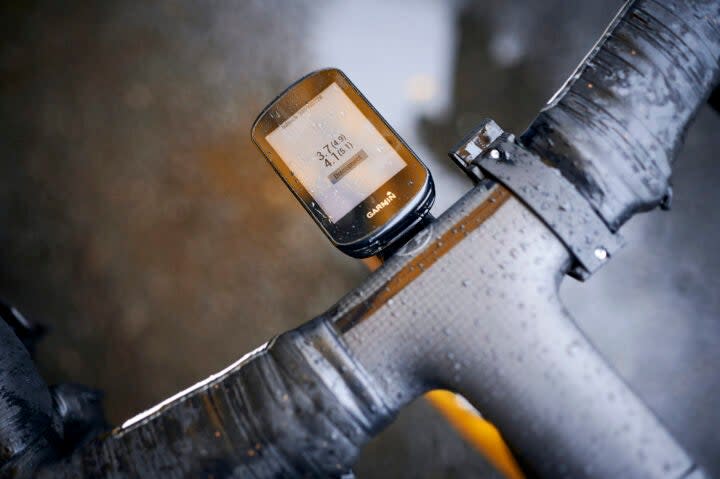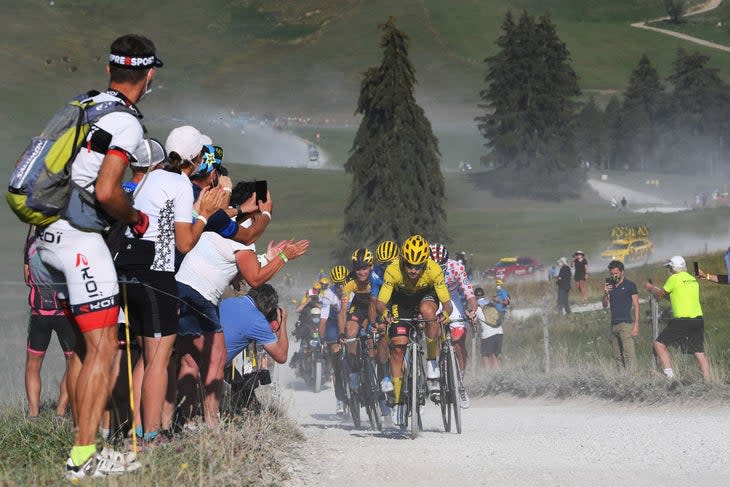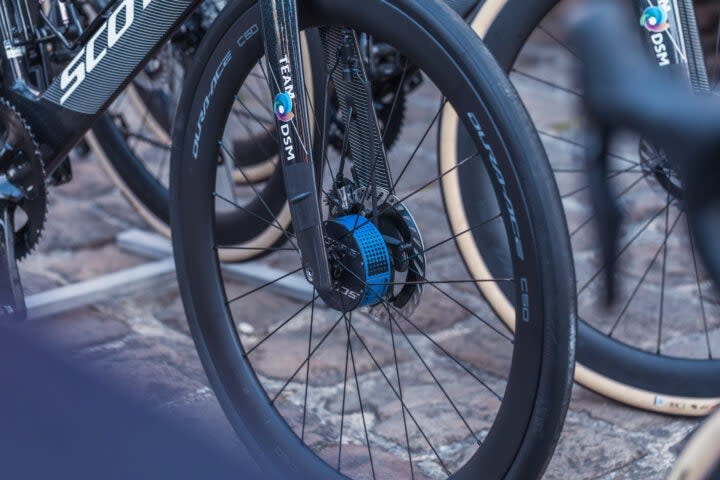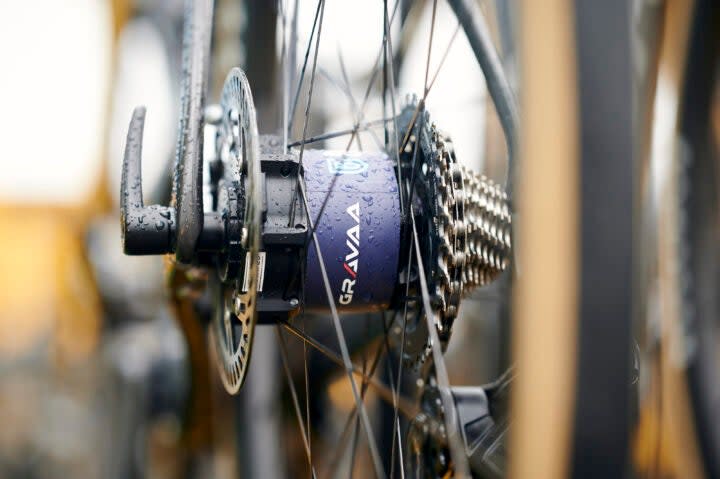Paris-Roubaix just the start as tire pressure regulator pioneers brace for wider WorldTour future
This article originally appeared on Velo News
Adjustable tire pressure regulators landed into the top-10 of Paris-Roubaix last weekend in what was a winning result for pioneering Dutch brands Gravaa and Scope.
The brains behind the "KAPS" and "Atmoz" systems used by Jumbo-Visma and Team DSM are bracing for a wider WorldTour future after pressure-regulation tech saw a breakout ride beneath Christophe Laporte at the “Hell of the North.”
"There's a lot of potential for us to discover, and for teams to discover from us," Gravaa founder Gertjan van Ginderen told VeloNews.
After years of internal development and collaboration with partner teams, Gravaa and Scope put a total of five riders from Jumbo-Visma and DSM onto adjustable tire pressure systems for the cobblestone onslaught of Paris-Roubaix.
Also read:
Roubaix scrapbook: Carrefour KoMs, record speeds, exploding wheels and more
How hard was Paris-Roubaix? Power data reveals the true pain of the 'Hell of the North'
Representatives from both brands told VeloNews that initial rider and staff feedback marked their big days on the pave a resounding success.
"Paris-Roubaix is the ultimate race to test KAPS, and I'm very pleased that we survived,” Van Ginderen said. “We saw broken wheels, we saw broken chains, broken derailleurs, and our system came through OK and always worked.
“So now we’ve passed that test, the world of cycling is open for us to see where we can play a wider role."
The men's Paris-Roubaix made for a watershed moment for tire pressure regulation, a groundbreaking new concept that allows rubber to be inflated or deflated on the move.
Gravaa saw KAPS wheelsets installed onto the Jumbo-Visma bikes of Laporte, Edoardo Affini, and Dylan van Baarle.
Across the paddock, DSM racers Nils Eekhoff and Pavel Bittner rolled to the start with Scope Atmoz systems rigged onto their Scott bikes.
VeloNews contacted both Jumbo-Visma and DSM for rider comment, but none was made available.
However, Van Ginderen sees Laporte’s sprint for 10th in the Roubaix velodrome while riding a KAPS wheelset as a milestone at the start of a long relationship with the cycling elite.
"The guys at Jumbo-Visma are very satisfied with our technology. Dylan van Baarle mentioned that he for sure will use it in the next races over the next years," Van Ginderen said in a call Friday.
"The idea is that we will now be a long-term partner with Jumbo-Visma. They already expressed interest in extending our partnership for the coming years."
The WorldTour wants tire pressure regulators

Van Gertjan told VeloNews he had to turn away a fleet of leading WorldTour teams that came knocking at his door after Gravaa exclusively partnered Jumbo-Visma last summer.
Rival brand Atmoz similarly has a long-term deal to solely supply Team DSM.
However, with the UCI mandating that all tech used in competition must also be available to the mass market, tire pressure adjustors could be on any team's bikes, any time soon.
"There’s a lot of interest. We’ve been approached by several teams, and anyone can buy it - it’s all online," Van Ginderen said.
"I think for sure already from next year, we will see other teams on it.”
Scope representative Bas Voermans is cautiously optimistic for the take-up of systems like his Atmoz product and Gravaa’s KAPS.
"Change can come slowly in cycling. If you look at disc brakes, it took some years for them to come widely into the peloton. I think it will be the same with this,” Voermans told VeloNews. “It will come, but it might take teams time to adapt.
"But what we've seen so far [from DSM] is there's a lot of interest from riders and mechanics, and they're really enthusiastic for something new. Especially the younger riders, they adapt to these new technologies more easily and are more open to it.”
‘There’s much more to explore’

Gravaa’s KAPS and Scope’s Atmoz operate via differing collections of pumps, reservoirs, batteries, and proprietary valves.
But the results are the same.
Both Atmoz and KAPS allow tire pressure to be tweaked while in the guts of a race via handlebar-mounted buttons.
Last weekend at Paris-Roubaix, Laporte, Van Baarle, Bittner and Co. could speed across the tarmac on firm tires and bump over the pave on softer rubber.
"Roubaix is of course the ultimate place for something like ours,” Gravaa’s Van Ginderen said.
“And yet there’s much more to explore beyond that, both for other road races and other types of cycling. Gravel riders are already interested in riding the world championships on it, for example."
Roubaix is the race where tire pressure becomes the hottest topic in the peloton.
However, it’s just as important at mix-surface classics like Strade Bianche and Paris-Tours, during races with changeable weather conditions, and even on days with hazardous descents.
"Other teams that approached us mentioned they would use it in the mountains at the Tour de France. For example, they could climb at eight bar, and descend at five bar. It would give a lot more grip and safety," Van Ginderen said.
“That sort of principle could work in so many different situations.”
So if tire pressure regulators are installed on every bike in the peloton in a decade's time, remember - you saw them first at Paris-Roubaix.


For exclusive access to all of our fitness, gear, adventure, and travel stories, plus discounts on trips, events, and gear, sign up for Outside+ today.

